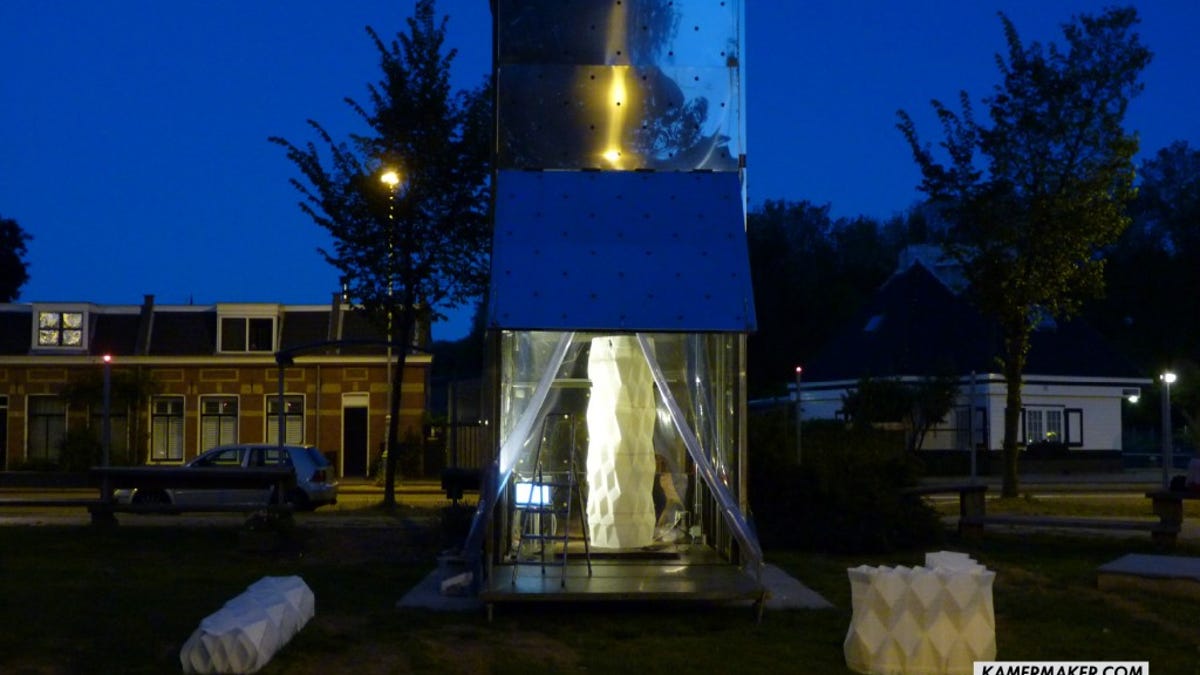Giant 3D printer starts spitting out a house
Forget machine parts and iPhone cases, the Dutch are thinking much bigger by using a 20-foot-tall 3D printer to create whole rooms that can be assembled into unique, customized houses.

Till now, 3D printing has been used to create relatively small items -- everything from iPhone cases to prosthetic fingers to aircraft parts and alien shoes. But none of those projects are a match for the full-size house Dutch architects have begun building in Amsterdam using a 20-foot-tall 3D printer.
The project, known simply as the "3D Print Canal House," uses a super-sized version of the popular in-home 3D printer made by Ultimaker. Dutch architectural firm Dus commissioned the machine when it decided to take the scale-model rooms it was already 3D-printing and turn them into the real thing.
"We bought a container from the Internet and we transformed it into one of the biggest printers on this planet," said Dus co-founder Hans Vermeule in a video (below) about the project.
The printer is called KamerMaker, which means "room builder," and that's exactly what it does -- construct a series of rooms that can be basically snapped together to form an entire house.
Thus far, the printer has produced a corner of the house with a partial staircase attached. The piece weighed about 400 pounds. The building blocks that are currently being produced, and take about a week each to print, have a honeycombed internal structure that will eventually be filled with a foam that reaches a concrete-like hardness, lending support and weight to the finished house, according to an Associated Press report.
The architects see multiple benefits to 3D-printing a house, aside from the possibilities of near-limitless customization. "For the first time in history, over half of the world's population is living in cities," Vermeulen said. "We need a rapid building technique to keep up the pace with the growth of the megacities. And we think 3D printing can be that technique."
Hedwig Heinsman, another of Dus' co-founders, adds that there are environmental benefits to be gained as well. "We can recycle waste materials into useable materials, and eliminate the transportation costs of moving building materials," she said.
The home-building site is currently open to the public, which can see the printer in action for €2.50 (about $3.50). The entire house will take about three years to finish and will be opened as design museum when it is done. I think they should fill it with nothing but 3D-printed furniture when it's ready!

